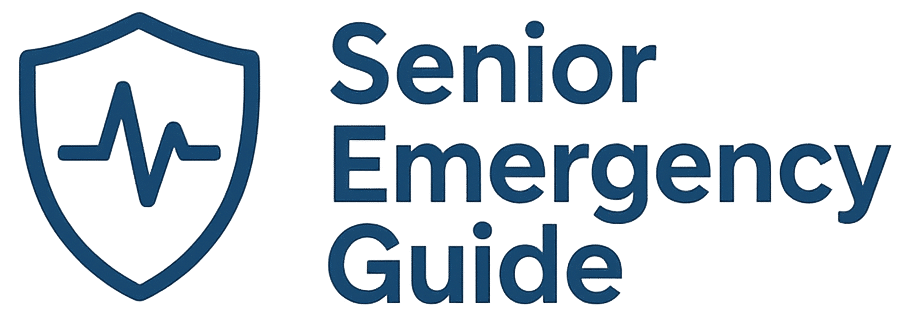Know exactly what to do in the first 10 minutes of a senior emergency.
Most families freeze, argue, or Google symptoms while precious minutes pass. This guide gives you a calm, step-by-step plan so you’re not guessing when it matters most.
- Step-by-step plan for the first 10 minutes when something feels “off.”
- Clear red-flag symptoms that mean “Call 911 now.”
- Printable quick-sheets you can tape to the fridge.
- Written in plain English for everyday families, not doctors.
This guide is for you if…
You’re the one everyone calls when something is wrong with an aging parent, spouse, or loved one — and you never want to wonder, “Am I doing the right thing?” in the middle of a crisis.
- You care for an aging parent or relative and want a simple, calm plan you can follow.
- You’ve had moments where you weren’t sure if you should call 911, wait, or drive to urgent care.
- You don’t want to rely on Google or random Facebook advice when minutes matter.
- You want everyone in the family to be on the same page about what to do when something feels “off.”
Emergencies rarely look like TV dramas. They look like “Mom seems off,” “Dad keeps saying he’s fine,”
or “She looks dizzy but doesn’t want to go in.”
Without a plan, families argue, delay, or second-guess themselves — and that’s when small problems can
become serious ones.
This guide doesn’t turn you into a doctor. It simply helps you stay calm, spot danger signs, and act with
confidence in those first critical minutes.
A calm, clear roadmap for the moments that feel overwhelming.
The Senior Emergency Guide is a practical, no-nonsense handbook focused on one thing: helping you stay steady when something feels wrong with an older adult at home.
The First 10 Minutes
A simple framework to follow the moment you notice something is off: what to check, what to ask, what to write down, and how to decide what happens next.
12 “Call 911 Now” Red Flags
Plain-English explanations of major danger signs: trouble breathing, chest pressure, confusion, sudden weakness, severe headache, fainting, uncontrolled bleeding, and more.
When to Call vs. When to Watch
Clear guidance on when you should call 911 immediately — and when it may be okay to monitor closely while you stay by their side.
Special Situations
Calm checklists for allergic reactions, diabetic issues, dehydration, heat-related problems, difficulty waking, and panic attacks that can look scary but aren’t always emergencies.
What Not to Do
The mistakes that make emergencies worse: waiting too long, moving someone after a fall, giving the wrong meds, relying on Google, or ignoring your gut.
Printable Quick Sheets
One-page quick-reference sheets you can print and keep on the fridge: red-flag checklist, what to tell 911, medication list, emergency contacts, and a fall/injury log.
How it works
This isn’t a course, a membership, or a complicated system. It’s a straightforward guide you can download, read in an evening, and keep within reach for when you need it.
- 1. Get instant access. After checkout you’ll receive a PDF download of the full guide.
- 2. Print what matters. Print the quick sheets and keep them by the phone, in a folder, or in your go-bag.
- 3. Use it when something feels “off.” Follow the 10-minute framework to stay calm, spot red flags, and act with confidence.
This guide does not replace doctors, nurses, or emergency services.
It is general information to help families think clearly and act quickly when something feels wrong.
In any emergency, or whenever you’re unsure, you should always call 911 or seek professional medical help.
Put a calm plan in place before the next scare.
You can’t control when something goes wrong — but you can control how prepared you are when it does.
You’ll be taken to a secure checkout page. After payment, you’ll be sent directly to a download page for the PDF.

